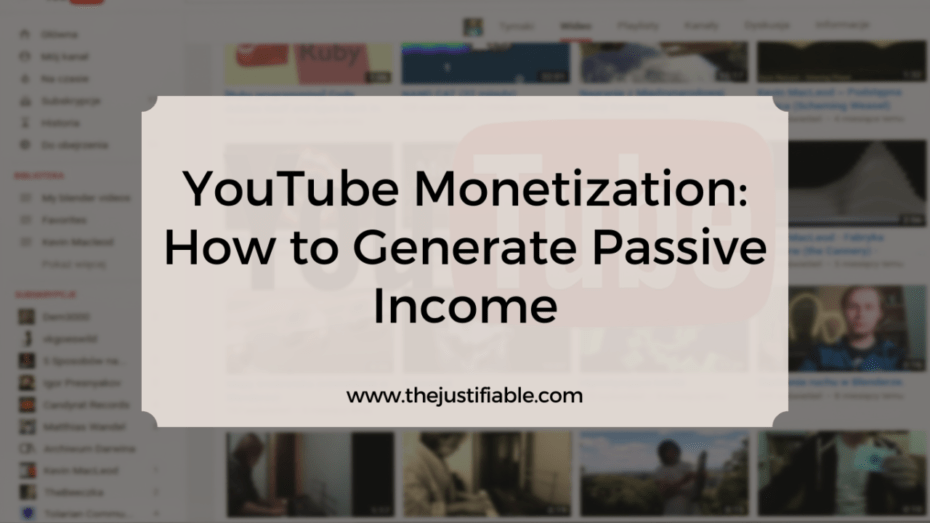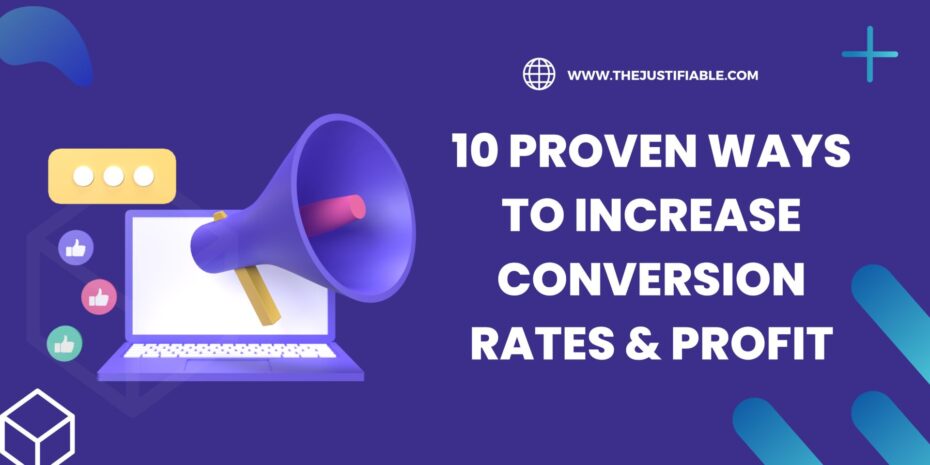Table of Contents
YouTube Monetization – YouTube, a name synonymous with online video sharing, has grown into a platform that offers more than just entertainment or information.
It has transformed into a lucrative business platform, making YouTube monetization a hot topic among creators worldwide.
Understanding the Concept of YouTube Monetization
YouTube monetization refers to the methods by which YouTubers generate income from their channel and content. The platform’s comprehensive monetization framework enables creators to earn money directly from their content through several streams.
The most common way to earn money on YouTube is by displaying advertisements on your videos. This process is managed by the YouTube Partner Program (YPP), which allows creators to share ad revenue with YouTube.
However, ads are not the only way to make money on YouTube. Monetization can also come from channel memberships, where viewers pay a monthly fee for access to exclusive content or perks. Additionally, creators can earn from the sale of merchandise directly through their YouTube channel.
YouTube monetization is a process that requires a deep understanding of both the platform’s guidelines and your audience’s preferences. Building a successful, income-generating YouTube channel is a strategic effort that involves creating engaging content, building an audience, optimizing for search, and effectively utilizing all available monetization options.
The Potential of YouTube as a Passive Income Stream
The potential for generating passive income through YouTube monetization is significant. Passive income is the income generated with minimal to no daily effort, making it an attractive option for many. And with YouTube, you can create a video once and earn revenue as long as the video keeps getting views.
However, it’s important to understand that creating a passive income stream on YouTube doesn’t happen overnight. It requires a well-planned strategy, consistent effort in content creation, understanding of SEO, and effective audience engagement.
Yet, once these elements are in place, and you have a library of popular content, the income can continue to flow even if you take a break from content creation.
Moreover, the growth of digital media consumption and YouTube’s international presence means that the platform holds immense potential for creators. It’s a global stage that can be leveraged to reach diverse audiences and generate income from around the world.
Eligibility Criteria for YouTube Monetization
A crucial aspect of embarking on the journey of YouTube monetization is understanding the eligibility criteria and the guidelines set forth by the platform.
This understanding ensures your channel’s compliance, which is a fundamental requirement to successfully generate income from your content.
YouTube Partner Program Guidelines
The YouTube Partner Program (YPP) is the gateway to YouTube monetization. But not everyone can join this program immediately. There are specific criteria that your channel must meet to become eligible:
Live in a country or region where the YouTube Partner Program is available: YPP is not open to all countries. Therefore, you need to ensure that your country or region is on their list.
Have more than 4,000 valid public watch hours in the last 12 months: This means people have spent 4,000 hours watching your content within the past year. This metric helps YouTube determine your channel’s potential for generating ad revenue.
Have more than 1,000 subscribers: This requirement helps ensure that there is a substantial audience base interested in your content.
Have a linked AdSense account: As AdSense is the platform that manages ad revenue, you need to set up an account with them and link it to your YouTube account.
Remember, meeting these criteria doesn’t guarantee entry into the YPP. Your content is also reviewed against YouTube’s policies and guidelines. If approved, you’ll be able to start earning money from ads on your videos, channel memberships, and more.
Importance of Complying with YouTube’s Policies and Guidelines
Compliance with YouTube’s policies and guidelines is non-negotiable for any creator interested in YouTube monetization. These policies cover a range of topics, including but not limited to copyright laws, hate speech, child safety, harmful or dangerous acts, and violent or graphic content.
Understanding these guidelines is crucial for several reasons. For starters, any violation can lead to your videos being demonetized, that is, they won’t generate any revenue. In more severe cases, non-compliance can lead to your channel being suspended or even permanently banned.
Complying with the policies also helps to improve the user experience. By ensuring your content meets YouTube’s standards, you’re helping to create a safe and enjoyable environment for viewers. This increases your chances of growing your audience and, by extension, your revenue potential.
How to Get Started with YouTube Monetization
The journey towards YouTube monetization involves several key steps. From creating a channel to producing engaging content, optimizing your videos for search, and building a strong subscriber base, each step contributes to your channel’s growth and profitability.
Steps to Create a YouTube Channel
Starting your YouTube monetization journey begins with creating a YouTube channel. Here are the steps:
- Create a Google Account: If you don’t already have a Google account, you will need to create one. This account is your gateway to accessing YouTube and its suite of features.
- Create a YouTube Channel: Once your Google account is set up, log in to YouTube and create your channel. Here, you have the option of using the name and picture from your Google account or creating a channel with a different name under the brand account.
- Customize Your Channel: This includes adding a profile picture, channel art, and a channel description that accurately describes what your content will be about.
- Upload a Video: With your channel set up, you can now upload your first video. Ensure the video is of high quality and adheres to YouTube’s guidelines.
Tips for Producing Engaging Content
Creating engaging content is key to attracting and retaining viewers on your channel. Here are a few tips:
- Understand Your Audience: Knowing who your audience is and what they like will guide your content creation process.
- Create High-Quality Videos: Invest in good filming and editing equipment. This doesn’t mean you need the most expensive gear. A smartphone with a good camera can get you started.
- Be Consistent: Keep a regular upload schedule. Consistency helps you retain your current subscribers and attract new ones.
- Engage with Your Audience: Respond to comments on your videos, and consider your viewers’ feedback when creating new content.
Optimizing Your Videos for Search
Optimizing your videos for search can help increase their visibility, leading to more views and, potentially, more revenue. Here’s how:
- Use Relevant Keywords in Your Video Title and Description: Research popular keywords relevant to your video’s content and use them in your title and description.
- Use Tags: Tags help YouTube understand your video’s content and context. They can help increase your video’s visibility in search results.
- Create Custom Thumbnails: Thumbnails can greatly affect your video’s click-through rate. An engaging thumbnail can draw viewers in.
Building a Strong Subscriber Base
A strong subscriber base not only helps meet the requirements for YouTube monetization but also forms a loyal audience that can provide a stable view count for your videos. Here’s how to build one:
- Encourage Viewers to Subscribe: At the end of each video, prompt viewers to subscribe to your channel.
- Engage with Your Subscribers: Reply to comments, consider their content suggestions, and show appreciation for their support.
- Promote Your Channel on Other Social Media Platforms: Leverage your presence on other social media platforms to drive traffic to your YouTube channel.
Starting with YouTube monetization might seem daunting, but breaking it down into these steps can make the process much more manageable. Your journey will involve continuous learning and adapting, but with patience and consistency, the effort can pay off significantly.
Monetization Methods on YouTube
While the opportunities for YouTube monetization are abundant, it’s important to understand the various methods available. From ad revenue to channel memberships, YouTube premium revenue, and merchandise sales, each avenue provides unique ways to generate income and engage your audience.
Ad Revenue through YouTube Monetization
Ad revenue is the most common form of YouTube monetization. Once accepted into the YouTube Partner Program, creators can choose to display ads on their videos. The revenue generated from these ads is then shared with the creator. There are various ad formats, including display ads, overlay ads, skippable and non-skippable video ads, and more.
It’s crucial to remember that ad revenue can fluctuate based on a number of factors. These include the number of views your video receives, the number of clicked ads, the ad’s quality, and more. To optimize your ad revenue, create engaging, high-quality content that attracts a large and engaged audience.
Channel Memberships and Super Chat
Channel memberships allow your subscribers to pay a monthly fee in exchange for exclusive perks such as badges, new emojis, or access to exclusive videos. This is a great way to generate a consistent stream of income while also providing value to your most loyal subscribers.
Super Chat, on the other hand, is a feature that allows viewers to pay a certain amount to highlight their messages during a live chat. It’s a fun way to engage with your audience during live streams and another avenue to boost your earnings.
YouTube Premium Revenue
YouTube Premium is a subscription service that offers an ad-free experience to its users. Despite the absence of ads, creators can still earn from YouTube Premium subscribers.
When these subscribers watch your content, you earn a portion of their subscription fee. This amount is determined by the amount of time they spend watching your content compared to other content they watch.
Selling Merchandise on YouTube
For creators with a large and dedicated following, selling merchandise can be a lucrative YouTube monetization method. Whether it’s t-shirts, mugs, tote bags, or any other product relevant to your brand, selling merchandise not only generates income but also strengthens your brand identity and enhances the connection between you and your audience.
Each of these monetization methods offers unique opportunities for revenue and audience engagement. By understanding and implementing these strategies, you can maximize your earning potential through YouTube monetization and turn your channel into a diverse and sustainable income stream.
Advanced Strategies for YouTube Monetization
Successfully navigating the world of YouTube monetization requires more than just meeting the basic requirements. To truly optimize your earning potential, you should consider advanced strategies such as collaborations, partnerships, utilizing analytics, and leveraging the power of SEO.
Collaborations and Partnerships for Greater Exposure
Collaborating with other creators or partnering with brands can significantly boost your channel’s exposure, leading to increased views, subscribers, and potentially, ad revenue.
These collaborations can take the form of joint videos, guest appearances, or product promotions. The key is to collaborate with individuals or brands that align with your content and appeal to your audience.
Partnerships, on the other hand, often involve sponsored content. Brands pay you to feature their product or service in your video. These partnerships can be quite profitable, but it’s crucial to maintain transparency with your audience about the sponsored nature of the content.
Using Analytics to Improve Monetization
YouTube Analytics is a powerful tool for understanding your audience, tracking your channel’s performance, and identifying opportunities for improvement. It provides data on watch time, viewer demographics, traffic sources, and more.
Using this information, you can tailor your content to your audience’s preferences, optimize your upload schedule, and improve your overall engagement. All of these factors can enhance your earning potential through YouTube monetization.
For instance, if analytics show a significant portion of your audience drops off at a certain point in your videos, you might consider adjusting your content to keep viewers engaged for longer. Similarly, if a particular type of video gets more views, you could create more content around that theme.
The Role of SEO in YouTube Monetization
Search Engine Optimization (SEO) plays a crucial role in YouTube monetization. When your videos are optimized for search, they’re more likely to be discovered by potential viewers. And more views can lead to higher ad revenue and more potential subscribers.
Optimizing your YouTube videos for SEO involves researching relevant keywords and including them in your title, description, and tags. It also involves optimizing your video thumbnails and the first few lines of your description to encourage click-throughs from potential viewers.
In addition, SEO isn’t just about the keywords you use. Engagement metrics such as watch time, likes, shares, and comments also influence your video’s ranking in search results. So, creating high-quality, engaging content is an essential part of SEO.
Common Challenges in YouTube Monetization
While YouTube monetization presents many exciting opportunities, it also comes with its share of challenges. From navigating copyright issues to managing viewer engagement and retention, understanding these challenges can help you better prepare and succeed in your monetization journey.
Navigating Copyright Issues on YouTube
One of the most common challenges creators face on YouTube relates to copyright. Copyright laws protect original works of authorship, including music, videos, and more. If you use someone else’s copyrighted work in your videos without permission, it could lead to your video being taken down, your channel receiving a copyright strike, or even legal action.
Understanding YouTube’s copyright system is crucial for anyone looking to monetize their content on the platform. Ensure that all the content in your videos is either created by you, licensed to you, or falls under fair use. When in doubt, seek legal advice.
Additionally, YouTube provides a library of copyright-safe music and sound effects that creators can use in their videos. Using these resources can help avoid copyright-related complications and keep your monetization efforts on track.
Managing Viewer Engagement and Retention
Another challenge in YouTube monetization is maintaining viewer engagement and retention. Viewer engagement, represented by likes, comments, shares, and watch time, is an essential factor in how YouTube’s algorithm promotes your videos. Similarly, viewer retention, or the percentage of your video that viewers watch, influences your video’s search rankings.
There are several strategies to improve viewer engagement and retention. First, ensure your videos provide value to your audience. Whether it’s entertainment, education, or inspiration, your content should meet a need or solve a problem for your viewers.
Second, create engaging video thumbnails and titles to attract viewers. Then, use a strong hook at the beginning of your videos to keep viewers watching. Lastly, engage with your audience in the comments section and consider their feedback when creating future content.
Challenges are a part of any journey, and the path to YouTube monetization is no different. By understanding these challenges and proactively addressing them, you can ensure a smoother journey towards creating a sustainable income stream through YouTube.
Success Stories of YouTube Monetization
Countless creators have leveraged YouTube monetization to not only generate a passive income but also build a strong personal brand and engage with a global audience. By examining their stories, we can glean valuable insights and apply those lessons to our own YouTube journey.
Top YouTubers who are Making Passive Income
Several YouTubers have successfully harnessed the power of YouTube monetization to generate substantial passive income.
One noteworthy example is PewDiePie (Felix Kjellberg), a Swedish YouTuber known for his Let’s Play videos and vlogs. With millions of subscribers, his earnings from ad revenue, merchandise, and sponsorships have placed him among the top-earning creators on the platform.
Another success story is Ryan’s World, a children’s YouTube channel featuring toy reviews and educational videos. Ryan’s earnings extend beyond YouTube ad revenue, with branded toys, clothing lines, and even a show on Nickelodeon.
Then there’s Lilly Singh, a Canadian YouTuber who began her career with comedic skits and vlogs. She has since monetized her channel through ad revenue, brand partnerships, book deals, and even her own late-night show on NBC.
Key Takeaways from Successful YouTube Monetization Strategies
These success stories underscore several key takeaways for effective YouTube monetization:
- Content is King: Each of these creators found a niche they were passionate about and consistently created high-quality, engaging content within that niche.
- Diversification of Income Streams: They’ve diversified their income streams beyond YouTube ad revenue, exploring merchandise, sponsorships, brand partnerships, and more.
- Engaging with Their Audience: These creators maintain a strong connection with their audience, whether it’s through responding to comments, integrating viewer suggestions into their content, or creating a community around their channel.
- Persistence and Consistency: Success on YouTube didn’t come overnight for these creators. They’ve shown persistence and consistency in creating and uploading content over the years.
By learning from these successful creators, we can gain insights into the strategies that work best in YouTube monetization. Remember, every creator’s journey is unique, and it’s important to find the approach that best aligns with your passions, skills, and audience’s interests.
Conclusion: YouTube Monetization as a Sustainable Passive Income Source
YouTube monetization provides a unique and potentially lucrative avenue for generating passive income. The platform’s global reach and diverse audience make it a fertile ground for creators to share their content, connect with viewers, and earn money doing what they love.
Recap of the YouTube Monetization Journey
Our journey through YouTube monetization has taken us from understanding the concept and recognizing YouTube’s potential as a passive income stream to the eligibility criteria for monetization, and the steps to create a YouTube channel.
We’ve also delved into producing engaging content, optimizing your videos for search, and building a strong subscriber base. We explored the different monetization methods on YouTube, including ad revenue, channel memberships, Super Chat, YouTube Premium revenue, and selling merchandise.
Advanced strategies like collaborations and partnerships, using analytics, and leveraging SEO for YouTube monetization were discussed, alongside the challenges that creators often encounter, like copyright issues and managing viewer engagement and retention.
Finally, we drew inspiration from successful YouTubers who’ve turned their channels into significant passive income sources and highlighted key takeaways from their strategies.
Future Trends in YouTube Monetization
As we look towards the future, YouTube monetization will continue to evolve. Emerging trends such as livestreaming, interactive content, and virtual reality could potentially open up new monetization avenues for creators.
The growing popularity of short-form content, as demonstrated by YouTube Shorts, suggests that there may be increased monetization opportunities in this format. Additionally, as more brands recognize the influence of YouTube creators, the potential for brand partnerships and sponsored content is likely to grow.
The rise of influencer marketing, coupled with the increasing focus on personalization and audience engagement, could also lead to more sophisticated and diverse income streams for YouTubers.
In conclusion, YouTube monetization is more than just a trend – it’s an enduring opportunity for creators to turn their passion into profit. As long as people continue to consume video content, the potential for making a sustainable passive income on YouTube remains vast.
Remember to stay updated with the platform’s evolving policies and trends, keep your audience at the heart of your content creation, and continue experimenting, learning, and growing.






